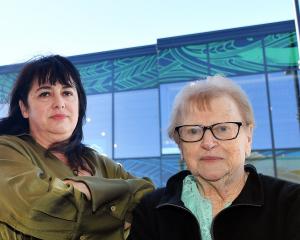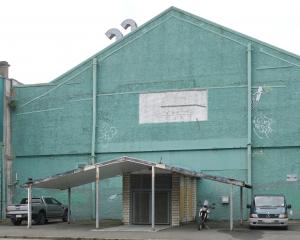
The Dunedin City Council is investigating the possibility of using the Kaikorai Stream to divert large amounts of wastewater away from South Dunedin during heavy rain.
Council 3 waters group manager Tom Dyer said there had already been initial conversations with Kai Tahu and the Otago Regional Council about the proposal, but a resource consent from the regional council was needed before any work could start.
Known as a wastewater overflow, the proposal would help avoid wastewater back-up from being discharged into private property or roads, Mr Dyer said.
Wastewater overflows were heavily diluted by the amount of water in the system and the overflow proposed would be screened to prevent solid matters entering the stream, he said.
Overflows already existed on the Kaikorai Stream and in other parts of the city, but not on the same scale as the one now being investigated.
"This certainly isn't intended as a permanent or ideal solution. Clearly, discharging a large amount of wastewater, albeit heavily diluted and screened, into a stream, will have an impact on the environment.
"However, we believe that the benefits to human health and well-being far outweigh the environmental impacts in this situation, until the permanent solution has been constructed,'' he said.
There were already long-term plans to address the issue through major projects which would see wastewater from the Kaikorai Valley catchment area which is currently piped through South Dunedin to the Tahuna treatment plant, piped to Green Island for treatment instead.
However, a new wastewater pipe needed to be constructed from Kaikorai Valley to Green Island, as well as a major upgrade of the Green Island wastewater treatment plant.
While planning was already under way, it would take at least eight years to fully plan, design and construct, Mr Dyer said.
"The South Dunedin community has made it very clear to us that eight years is too long to wait, particularly given the potential health risks that come with wastewater flooding.''
The current wastewater flooding in South Dunedin is unscreened and much of the wastewater ends up making its way into the stormwater system via mud tanks and is eventually discharged into Otago Harbour.
The new proposal would send screened wastewater into the Kaikorai Stream and help prevent wastewater flooding and contamination in South Dunedin.
If the proposal went ahead, sensors would be installed in the Surrey St area so the Kaikorai Valley overflow was only activated when absolutely required to help protect human health.
Advertisement
Comments
I do wonder if the eight year time frame for a more robust solution could be shortened considerably if more money was available. Perhaps we could halve the budget for the Van Brandenburg bridge from twenty million to ten. After all, that's still more than TEN TIMES what it's going to cost to build the bridge near the mouth of the Leith, to link the city to the West Harbour cycle/walkway, which has also been approved. I guess an upgraded treatment plant at Green Island is less of a legacy to leave a city at the end of your political career than a bridge that cost twenty times what a perfectly functional alternative would. Mind you, I'd be concerned about leaving the legacy of an environmental disaster and a number of coastal suburbs inundated with effluent too.
The only real solution to South Dunedin flooding is a ban on further development in low lying areas combined with a managed retreat.
It's not appealing in the least but it does face up to reality. Anything else is a heads-in-the-sand avoidance of the situation.












